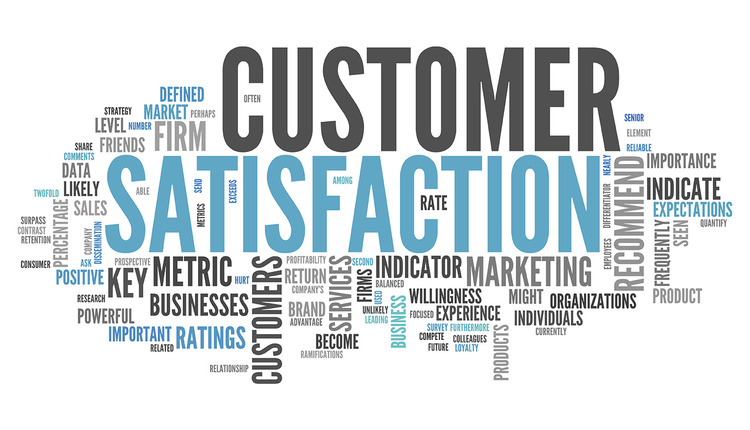Target recently announced that it would offer free shipping on every online order its customers make through December 20 this year. That decision, while newsworthy, isn’t necessarily surprising. Since the advent of B2C commerce, retailers have known and profited from the power of free shipping offers. In every non-brick-and-mortar sales channel there is, the promise of free delivery continues to be the most powerful and effective deal-closing promotion the retail industry has ever devised.
The unparalleled performance of free shipping offers led to the development of programs such as Amazon Prime and FreeShipping.com, which have found success in the online retail space by offering shoppers significant, ongoing savings on delivery fees for their orders. In fact, that success is a significant reason why Target decided to hop on the ever-growing free shipping bandwagon. If it wants to appeal to the widest possible range of holiday shoppers and keep pace with the leading online retailer in the world, Target essentially has to match Amazon’s moves wherever it can.
Unlike Walmart, though, which announced plans in October to go head-to-head with Amazon on discounts, Target doesn’t want to compete with Amazon on pricing. For a variety of reasons, it’s chosen instead to counter the appeal of Amazon Prime’s free 2-day shipping benefit with a comprehensive free shipping offer of its own.
Given the attraction of free shipping, Target’s move seems both savvy and sensible — savvy in that it’s the most reliable promotion available, and sensible in that free shipping can also increase average order values in addition to total sales. However, retailers often use minimum purchase thresholds to influence their shoppers’ shopping cart sizes. By offering free shipping on everything — including $6 lipsticks — Target is leaving itself open to losses on a variety of products that may cost more to ship than they generate in income.
Beyond that, as we all know, there’s no such thing as “free” shipping. If its customers aren’t paying to have their orders delivered, Target will have to absorb all of the various charges involved with moving items from warehouse shelves to front doors. While the costs of delivering individual orders — from real estate bills and staff wages to the various fees associated with transportation, logistical needs, and more — are typically reduced by economies of scale, that scale can be reversed when none of those purchases bring in their customary revenue from shipping charges. FreeShipping.com, Amazon Prime, and other programs that offer consumers savings on delivery charges use membership fees to help recoup their costs; Target has no such offsets built into its offer.
Of course, Target can and should try to make up its shortfall by turning the new customers it acquires this holiday season into loyal, repeat clients. Holiday shoppers, however, can be notoriously fickle consumers, more interested in pursuing short-term savings than long-term relationships. Target will therefore need to implement a well-designed and -planned loyalty program and strategy to reap those rewards.
Target faces another challenge in trying to solidify its gains, though. Online consumers now expect free shipping — so much so that many of them won’t make a purchase without it. By scheduling its promotion to end on December 20, Target is announcing that it will be eliminating an attractive (and necessary) incentive for new customers to return even before they’ve finished their holiday shopping.
To succeed (or just survive) in the coming years, online stores will need to continually improve their delivery systems. Retail profit margins are already wafer-thin, and companies like Amazon and Walmart are threatening to squeeze them even further. Retailers that develop the most cost-efficient ways to reduce, or at least slow the growth of, shipping costs will gain a vital advantage on their online rivals.
Free shipping rightly continues to be the promotion of choice when retailers want to increase sales and average order values. As Target may soon learn, though, retailers will have to buttress those offers with back-end systems and processes that can contain their delivery costs if they hope to stay competitive in a challenging online environment.
Tom Caporaso is the CEO of Clarus Marketing Group, which builds and customizes subscription programs, including FreeShipping.com, Return Saver, Travel Plus, and others. Tom has over two decades of direct marketing experience, specializing in continuity, subscription and custom loyalty programs. He’s held senior management roles in e-commerce, subscription programs, site optimization, SEM and SEO, product, marketing, sales, and client services.
The unparalleled performance of free shipping offers led to the development of programs such as Amazon Prime and FreeShipping.com, which have found success in the online retail space by offering shoppers significant, ongoing savings on delivery fees for their orders. In fact, that success is a significant reason why Target decided to hop on the ever-growing free shipping bandwagon. If it wants to appeal to the widest possible range of holiday shoppers and keep pace with the leading online retailer in the world, Target essentially has to match Amazon’s moves wherever it can.
Unlike Walmart, though, which announced plans in October to go head-to-head with Amazon on discounts, Target doesn’t want to compete with Amazon on pricing. For a variety of reasons, it’s chosen instead to counter the appeal of Amazon Prime’s free 2-day shipping benefit with a comprehensive free shipping offer of its own.
Given the attraction of free shipping, Target’s move seems both savvy and sensible — savvy in that it’s the most reliable promotion available, and sensible in that free shipping can also increase average order values in addition to total sales. However, retailers often use minimum purchase thresholds to influence their shoppers’ shopping cart sizes. By offering free shipping on everything — including $6 lipsticks — Target is leaving itself open to losses on a variety of products that may cost more to ship than they generate in income.
Beyond that, as we all know, there’s no such thing as “free” shipping. If its customers aren’t paying to have their orders delivered, Target will have to absorb all of the various charges involved with moving items from warehouse shelves to front doors. While the costs of delivering individual orders — from real estate bills and staff wages to the various fees associated with transportation, logistical needs, and more — are typically reduced by economies of scale, that scale can be reversed when none of those purchases bring in their customary revenue from shipping charges. FreeShipping.com, Amazon Prime, and other programs that offer consumers savings on delivery charges use membership fees to help recoup their costs; Target has no such offsets built into its offer.
Of course, Target can and should try to make up its shortfall by turning the new customers it acquires this holiday season into loyal, repeat clients. Holiday shoppers, however, can be notoriously fickle consumers, more interested in pursuing short-term savings than long-term relationships. Target will therefore need to implement a well-designed and -planned loyalty program and strategy to reap those rewards.
Target faces another challenge in trying to solidify its gains, though. Online consumers now expect free shipping — so much so that many of them won’t make a purchase without it. By scheduling its promotion to end on December 20, Target is announcing that it will be eliminating an attractive (and necessary) incentive for new customers to return even before they’ve finished their holiday shopping.
To succeed (or just survive) in the coming years, online stores will need to continually improve their delivery systems. Retail profit margins are already wafer-thin, and companies like Amazon and Walmart are threatening to squeeze them even further. Retailers that develop the most cost-efficient ways to reduce, or at least slow the growth of, shipping costs will gain a vital advantage on their online rivals.
Free shipping rightly continues to be the promotion of choice when retailers want to increase sales and average order values. As Target may soon learn, though, retailers will have to buttress those offers with back-end systems and processes that can contain their delivery costs if they hope to stay competitive in a challenging online environment.
Tom Caporaso is the CEO of Clarus Marketing Group, which builds and customizes subscription programs, including FreeShipping.com, Return Saver, Travel Plus, and others. Tom has over two decades of direct marketing experience, specializing in continuity, subscription and custom loyalty programs. He’s held senior management roles in e-commerce, subscription programs, site optimization, SEM and SEO, product, marketing, sales, and client services.








